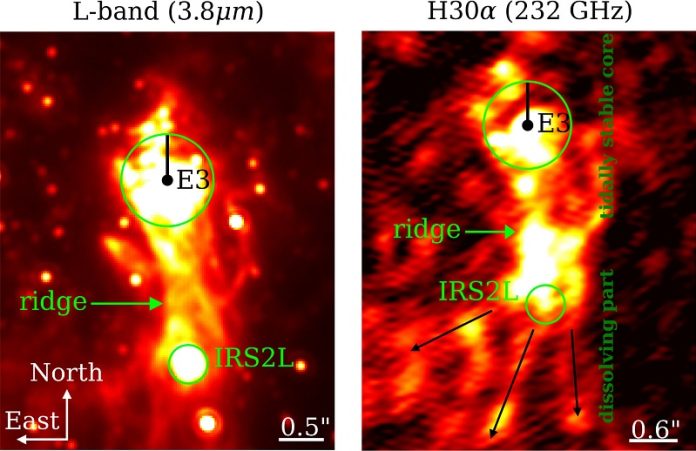
An international team of researchers, led by Dr. Florian Peißker, has discovered signs of a new intermediate-mass black hole near the supermassive black hole Sagittarius A* (SgrA*) at the center of our galaxy.
This exciting find adds to the very few known intermediate-mass black holes in the universe—only about ten have been discovered so far.
These black holes are believed to have formed shortly after the Big Bang and may have merged to create supermassive black holes.
The team’s study, “The Evaporating Massive Embedded Stellar Cluster IRS 13 Close to Sgr A*. II. Kinematic structure,” was published in The Astrophysical Journal.
They focused on a star cluster called IRS 13, located just 0.1 light-years from the center of our galaxy. This distance, while tiny in astronomical terms, is still vast compared to our solar system.
The researchers noticed that the stars in IRS 13 move in a surprisingly orderly pattern, unlike the random arrangement they expected. This regular motion suggests two things: first, IRS 13 interacts with SgrA*, and second, something inside the cluster is keeping it compact.
Observations using the Very Large Telescope, ALMA, and Chandra telescopes suggest that an intermediate-mass black hole might be at the center of IRS 13. This idea is supported by the detection of characteristic X-rays and ionized gas moving at several hundred kilometers per second around the suspected black hole.
Another clue pointing to an intermediate-mass black hole is the unusually high density of the star cluster, higher than any other known star cluster in the Milky Way. Dr. Peißker, the study’s first author, explained that IRS 13 seems to play a crucial role in the growth of our central black hole, SgrA*.
Dr. Peißker noted, “This fascinating star cluster has continued to surprise the scientific community ever since it was discovered around twenty years ago. Initially, it was thought to be an unusually heavy star. With high-resolution data, we can now confirm the presence of an intermediate-mass black hole at its center.”
Future observations with the James Webb Space Telescope and the Extremely Large Telescope, currently under construction, are expected to provide even more insights into the processes occurring within IRS 13.
These discoveries could help scientists better understand how intermediate-mass black holes contribute to the growth of supermassive black holes, shedding light on the early history of our universe.



